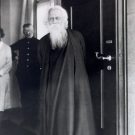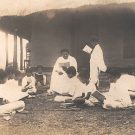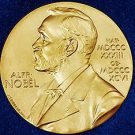
Unity in India: The Message of the Forest
A special feature of the shellac records in the the Humboldt University Sound Archives is the Tagore’s signature engraved in the wax plate of the recording. Wilhelm Doegen always added his signature too. These closing words of a speech that Tagore gave in English were recorded in the university’s main lecture theater on June 1, 1921 (and again the following evening in view of the interest shown in it). Read more



